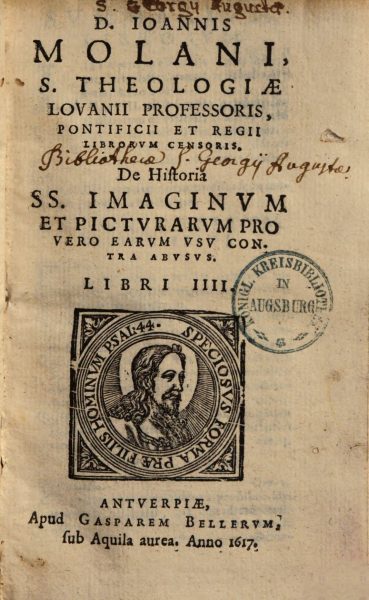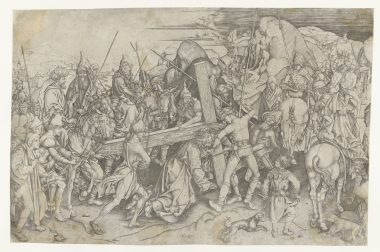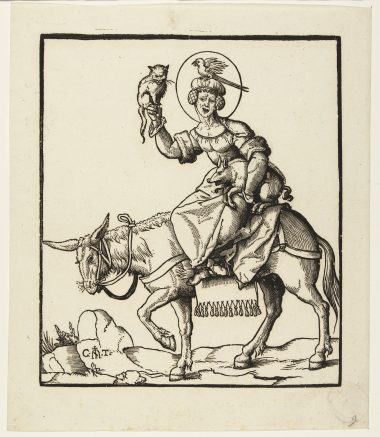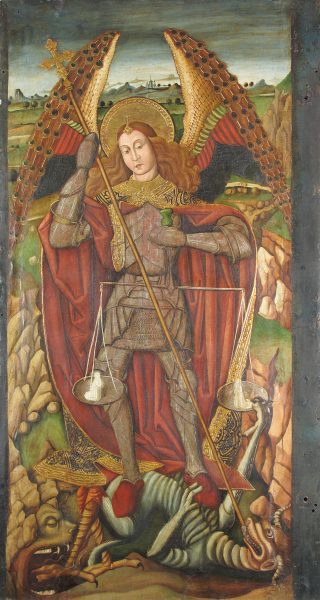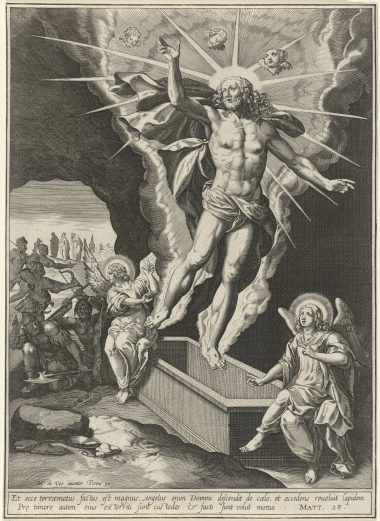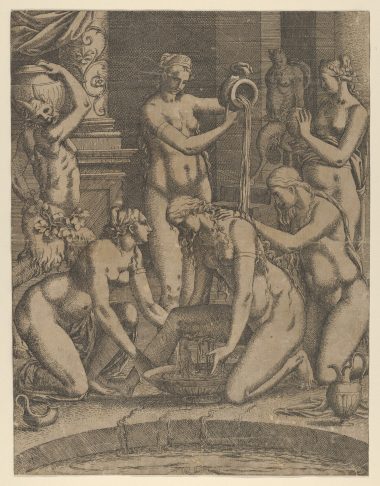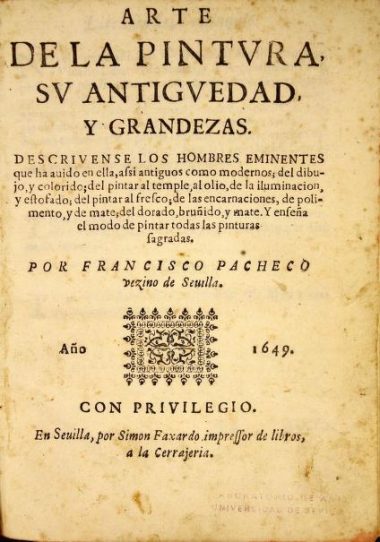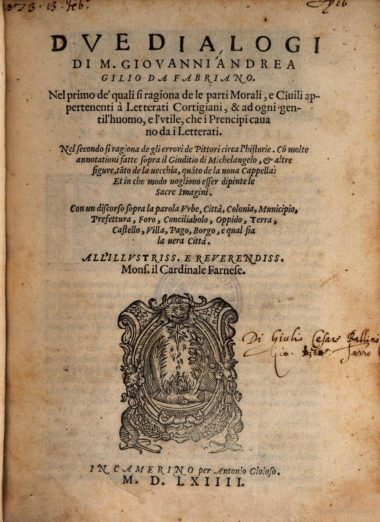The common opinion of the whole Church as a ground for approval in case written sources are unclear
The acceptability of paintings based on unestablished narratives depends on their propriety and probability and should be judged by the Church.
Simon of Cyrene helping Christ while bearing the Cross
Molanus argues that since there is no clarity about how Simon the Cyrenian helped Christ bear the Cross, therefore paintings that show Christ walking in front while he carries the bottom of the Cross, as well as paintings in which Simone the Cyrenian supports the bottom of the Cross are both acceptable.
The portrayal of sin in the guise of a woman
Molanus discusses the story of Zechariah who saw sin in the guise of a woman, because women give rise to the greatest vices through voluptuousness, therefore he concludes that it is correct to depict the ungodly as a woman.
Virtues preserved as false saints
Molanus counters the claims of the Anabaptists that certain virtues have been turned into fictive saints in the Catholic Church
The liberty of the poetic licence
In this part of the dialogue, M. Vincenzo further defines the poetic liberty (poetic licence).
The indecency of depicting the Holy Mary naked in her nativity
One of the scenes of the Virgin Mary’s life represented by the artists and criticized by Pacheco is concerning her birth. The author states that is indecent to depict her body naked: following the same “rule” the artists should avoid doing it with the Infant Jesus representation, also with the Virgin’s body as a child should be respected, “with even more reason, as she is a woman”.
The Scale of the Archangel Michael does not imply that through good deeds one obtains eternal Life
Molanus criticises the motif of Archangel Michael weighing the souls of the dead on a scale to assess their fate; he is often surrounded by Luficer or other develish creatures and angels.
The Last Supper should not be depicted as a luxurious feast
Molanus argues that paintings of Christ should serve as a model of honesty and religion, therefore painting the Last Supper full of luxuries constitutes an act of blasphemy.
Condemnation of profane art
Molanus condemns collecting and the display of profane statues as a sin.
Painting of the Trinity described in an edict of the Inquisition of Mexico
Edict of the Holy Office of Mexico describing some cavases that allegedly entered the kingdom and recommending that they be collected so that they do not continue to circulate. he Inquisition express the fear that the images convey Lutheran errors
Crucifix painted by the Devil
How to represent a divine revelation
,
1509 - 1512In this passage, the participants discuss what they see as a new form of representation of the divine revelation initiated by Michelangelo.
Images of protestant leaders should also be prohibited by authorities
Molanus argues that images of protestant reformers and other heritical figures should be prohibited by authorities.
The resurrection of Christ took place from a closed tomb
Molanus affirms that the resurrection of Christ should be depicted with a closed tomb and not with an open as some painters tend to do
Lascivious images should be banned
Molanus argues that indecent and lascivious art, such as naked Venuses or Satyrs, should be forbidden because they are prostitution to the eye.
Useful representations derived from the pagans
Molanus discusses the usefulness of antique images of cities and countries.
Arnau Dandes does not believe in images
Arnau Dandes, a native of France, disbelieved in the image of Mary and of God
The correct way of representing the clothes of Christ in the “The procession to Calvary with the cross”
The Passion of Christ iconography was an important topic for Pacheco. The author in this passage analyses the scene of “The procession to Calvary with the cross”, and presented the artwork made by Luis de Vargas as an example of an inadequate manner of depicting Christ: wearing only one tunic, instead of two garments on him, mantle, and skirt (the correct manner).
The Virgin Mary meditating on our redemption during the Annunciation
The position of Mary at the moment of the annunciation is not clearly described in the Scriptures, therefore painters should depict her according to the common opinion on this matter and what seems most probable from the Scriptures.
Christ seated on the cold stone
Molanus affirms that the depiction of Christ on a stone is not an error despite not being derived from the Scriptures.
It is useful to write the names of lesser-known saints and martyrs in their paintings
Molanus argues that because of the large number of saints, it is advisable to write their names as captions in the paintings.
Faith, Hope, and Charity and their mother, Wisdom, are official martyrs of the Church
Molanus argues that the Three Graces and their mother have a very long tradition in the Church and attempts to remove them from the litanies should not be tolerated.
The monstrous
The participants have already spoken about grotesques (monstrosities) in advance.



